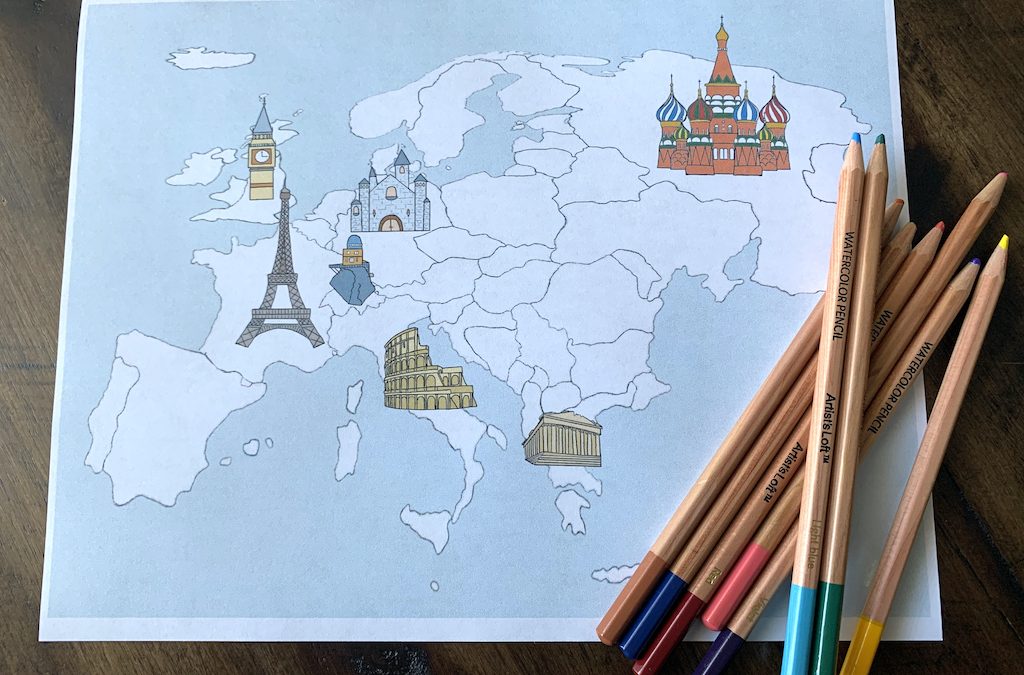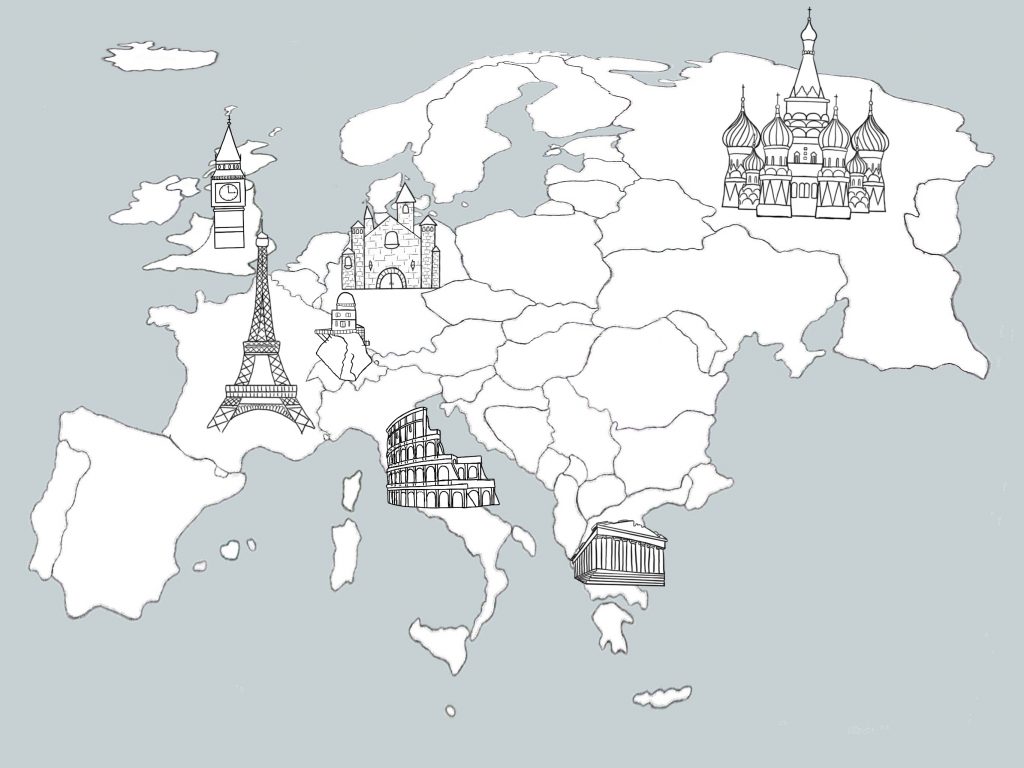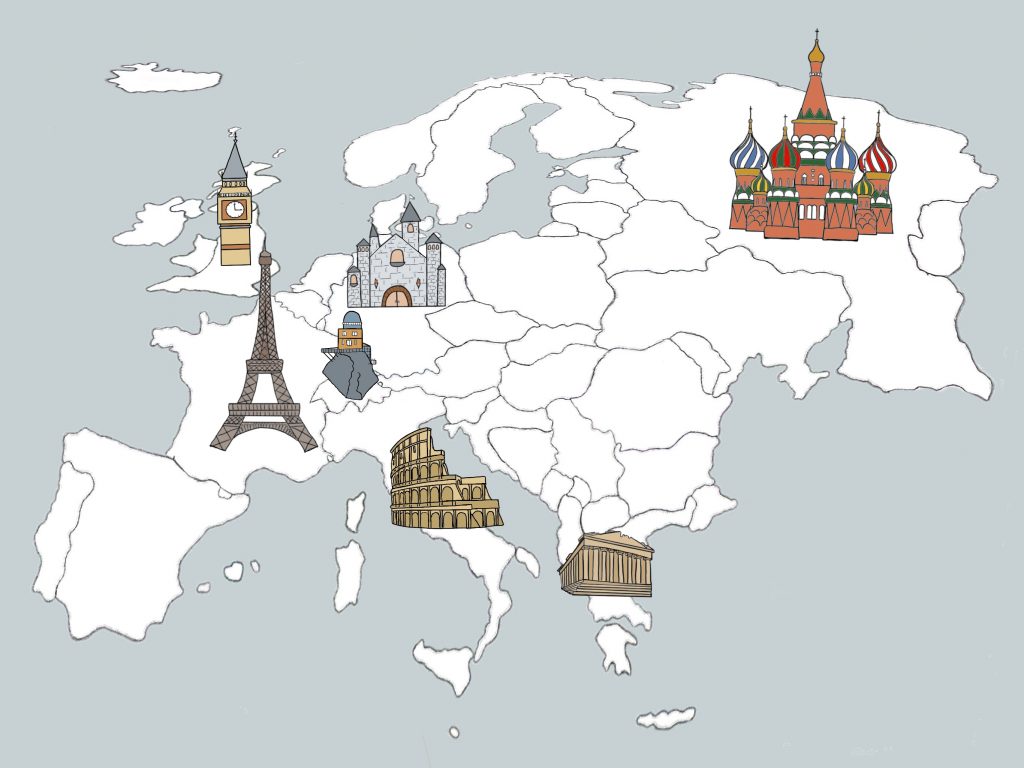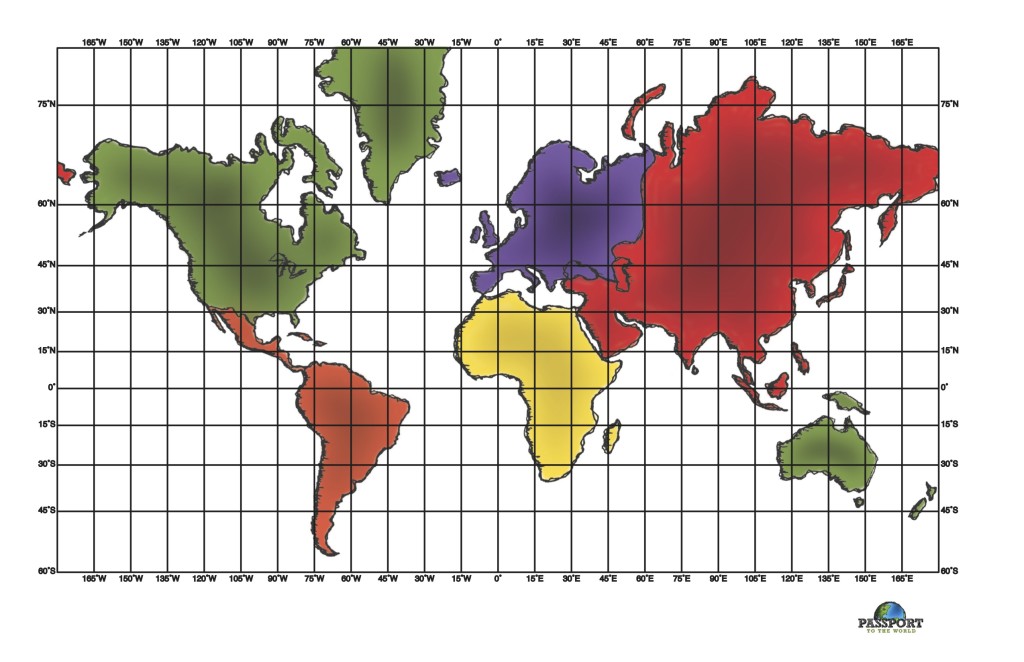Just like there are some books that every kid should be familiar with and read (Dr. Seuss books, “Little House on the Prairie”, “Harry Potter” series to name a few), there are also iconic architectural structures around the world that everyone should be able to identify. For example, in America, the Statue of Liberty and the White House are infamous and iconic structures. Other countries in the world express their own unique culture through architecture and statues as well.
Instructions:
Read through the list of structures, their locations and their history with your students. Ask students to find the architectural feature on their maps and color the building as you talk through the information.
What you will need:
- A copy of the Famous Architecture of Europe coloring page; one per student
- Colored pencils
- Completed coloring page for reference
While there are many more iconic architectural structures around the world, the following made our short list:
Images of each of these landmarks can be found here: https://www.pinterest.com/passportnation/live-it-a-slice-of-life-in-europe/famous-architecture-of-europe/
Big Ben in London, England
Big Ben, the nickname for the Great Bell and its tower located at the north end of Westminster Palace (home to the houses of Parliament) is one of London’s most famous landmarks. At its completion in1859, its clock was the largest and most accurate four-faced striking and chiming clock in the world.
The Eiffel Tower in Paris, France
The French have a nickname for the Eiffel Tower, La Dame de Fer, or “the Iron Lady.”
Although at the beginning it was seen as “the ugliest building in Paris,” today, the Eiffel Tower is arguably Paris’ most beloved and symbolic landmark. Built as the main exhibit for the World’s Fair of 1889, it was constructed to commemorate the centennial of the French Revolution and to showcase the accomplishments of the Industrial Revolution. Gustave Eiffel, a French civil engineer, is usually credited with designing the tower that bears his name even though two engineers from his company created the actual design. He used latticed wrought iron to construct the tower to demonstrate that the metal could be as strong as stone, while being lighter.
In 1887, iron was a newly popular building material because of the Industrial Revolution. However, at the time of the tower’s construction, it had only appeared internally as support structures, or in unimportant buildings, factories and bridges. Therefore, using iron as the key material for the Eiffel Tower was very controversial at the time. As a result, the Eiffel Tower was built amongst criticism, especially from the artistic community.
A few key facts about the Eiffel Tower:
- Construction of the Eiffel Tower cost about $7.8 million gold francs in 1889, or about 1.5 million dollars.
- The Eiffel Tower is approximately 1000 feet tall, making it the world’s tallest structure at the time until the Chrysler Building was built in New York in 1930.
- Although the tower was built to sway slightly with the wind, its sway is actually affected more by the sun. As the iron heats up on the sun-facing side of the tower, this causes the top to move as much as 7 inches away from the sun.
- There are 5 billion lights on the Eiffel Tower.
- Although the Eiffel Tower has 108 stories and over 1700 steps.
The Neuschwanstein Castle in Bavaria, Germany
Steeped in history, Germany hosts some of the most beautiful castles in the world. Some castles are fortified and defensive in their appearance, while other castles have a more fairytale nature. The awe-inspiring and magical Neuschwanstein Castle is one of the latter. So magical, in fact, that nearly a century after it was built, Walt Disney visited the castle with his wife, and this castle became the inspiration for the Sleeping Beauty castle in Disneyland!
Neuschwanstein Castle, a 19th-century Roman Revival palace, is built on a rugged hill in southwest Bavaria (a free state in the Southeastern portion of Germany). Although the castle is 65,000 square feet in size (compare to a generous-sized family home of 2000 square feet), it was built for just one person – King Ludwig II of Bavaria. Ludwig commissioned this cliffside castle in 1868, just two years after Bavaria was conquered by Prussia. Effectively stripped of his powers, Ludwig retreated into a private fantasy world where he surrounded himself with magnificent castles so he could live out his dreams of being a true, sovereign king. These actions caused Ludwig to be dubbed “the fairy tale king”.
Although Neuschwanstein Castle took 10 years to build, Kind Ludwig died only a couple of weeks after moving in. As a result, some of the rooms in the castle were literally never used. Since then, the castle has been open for public viewing. With sweeping views of the German Alps, the castle is breathtaking during any season of the year!
Sphinx Observatory in Switzerland
Stunning photos of the observatory can be found here: https://www.atlasobscura.com/places/sphinx-observatory
Located in the Swiss Alps, the Sphinx Observatory is a science research lab and observatory that was completed in 1937. Perched on a steep precipice between two summits, it is known as “Top of Europe” because the observatory is the highest-altitude construction in the entire continent. The Sphinx has served as the headquarters for researchers in fields of study such as astronomy, weather, glaciology, medicine, and physics. The observatory portion of the structure provides visitors with panoramic views of the Swiss Alps, including a nearby glacier. With the proper weather, views can stretch as far as Italy and Germany!
The Colosseum in Rome, Italy
The Colosseum, a free-standing amphitheater made of stone and concrete, was begun around 70-72 AD and took 10 years to complete. It was known as the largest amphitheater of its time, holding seats for more than 50,000 spectators. This impressive stone structure hosted a festival called the 100 Day Games, which included gladiator combats and wild animal fights. After 400 years of use, this magnificent arena fell into disrepair and became a source of building materials. Although nearly 2/3 of the amphitheater has been destroyed due to weather, natural disasters and neglect, the remainder has been preserved and remains a popular tourist destination and a symbol of Rome’s long and tumultuous history.
The Parthenon in Athens, Greece
The Parthenon was a beautiful marble temple built in the 5th Century BC, dedicated to the goddess Athena, the goddess of wisdom, arts and literature and war. The Parthenon sits high atop a compound of temples known as the Acropolis of Athens, the heart of religious life in this ancient Greek city. Although battered, the Parthenon has withstood wars, natural disasters, and looting, and stands today as a powerful symbol of Ancient Greece.
The popular Greek statesman, Pericles, is credited with ordering the design and construction of the Parthenon. Taking four decades to construct, the Parthenon is known for its characteristic columns that surround the entire structure, creating its characteristic symmetrical structure. Forty-six columns are located on the exterior of the structure, with an additional nineteen columns on the interior. In addition, the Parthenon is decorated with multiple other elaborate aspects of Greek Architecture, including metopes, friezes and sculptures.
As control of Greece changed hands over time, the function of the Parthenon also changed. Initially serving as a temple for a Greek goddess, The Parthenon transitioned to a Christian church, and finally into a mosque for the Turks. In the 1820s, the Greeks fought for and gained independence from the Turks, restoring the Acropolis to its original owner. Today, the Parthenon and its sister structures continue to undergo restoration, and stand as lasting icons of rich Greek architectural history.
Saint Basil’s Cathedral in Moscow, Russia
God provides for his creation by supplying mankind with the wisdom, creativity, ingenuity, and capability to dream, design and construct buildings that not only protect us, but also add beauty to our world.




